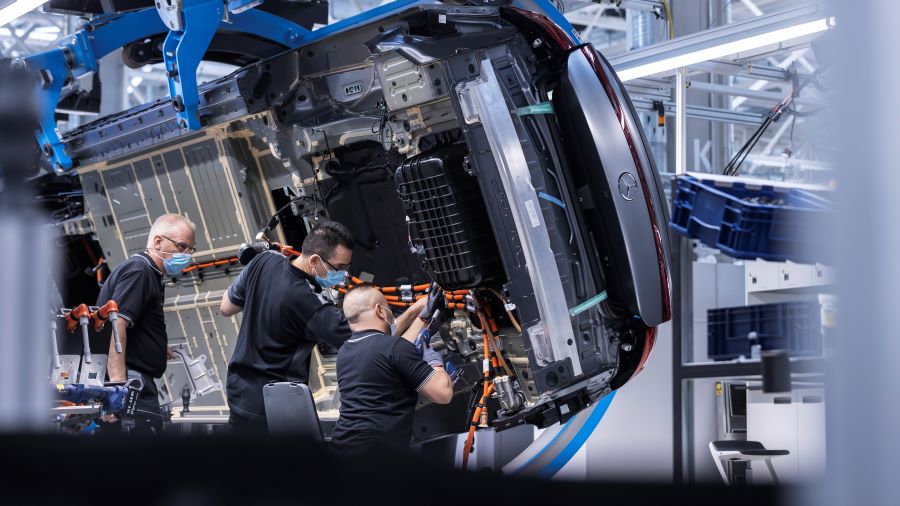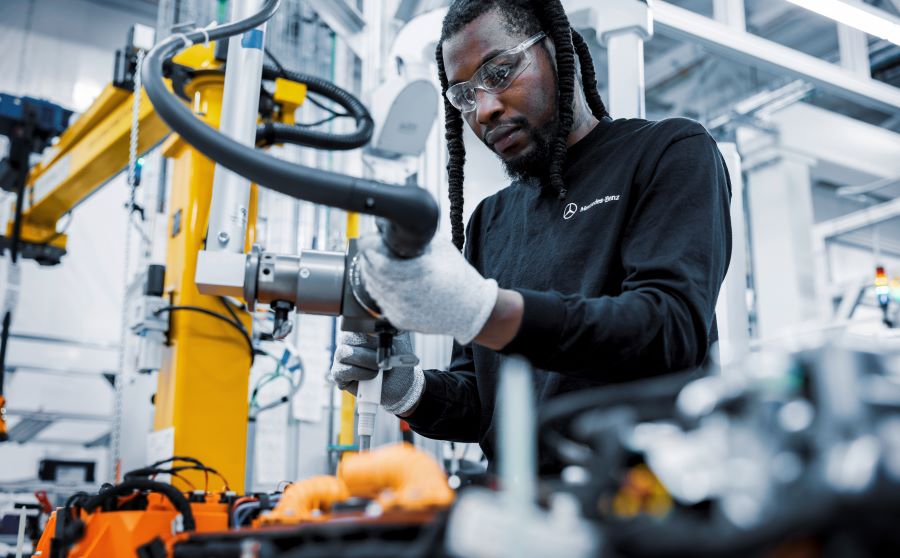STUTTGART, Germany—Daimler AG’s Mercedes-Benz brand plans to become all-electric by the end of this decade. Shifting from electric-first to electric-only, the car company is accelerating toward an emissions-free and software-driven future.
By 2022, Mercedes-Benz AG will have battery electric vehicles in all segments that it serves, including for passenger cars and light commercial vehicles. From 2025 onwards, all newly launched vehicle architectures will be electric-only and customers will be able to choose an all-electric alternative for every model the company makes.
“The EV shift is picking up speed, especially in the luxury segment,” says Ola Källenius, CEO of Daimler AG. “The tipping point is getting closer and we will be ready as markets switch to electric-only by the end of this decade. This step marks a profound reallocation of capital.”
By the end of next year, eight Mercedes-Benz electric vehicles will be produced at seven locations on three continents. And, between 2022 and 2030, Daimler plans to invest 40 billion euros in EV technology for its Mercedes-Benz division. In 2025, Mercedes-Benz will launch three electric-only architectures based on a modular, scalable system.
Mercedes-Benz engineers are currently developing the Vision EQXX, an electric car with a real-world range of more than 1,000 kilometers, targeting a single-digit figure for kilowatt hours per 100 kilometers (over 6 miles per Kwh) at normal highway driving speeds.
A multidisciplinary team, including experts from Mercedes-Benz’s high-performance power train division is making rapid progress toward the project’s ambitious goals. The world premiere will be in 2022. Technological advances made with Vision EQXX will be adapted and applied for potential use in future EV architectures.
The company also plans to focus on vertical integration by in-sourcing electric drive technology. This step includes the acquisition of UK-based electric motor company YASA. It provides Mercedes-Benz engineers with access to unique axial-flux motor technology and expertise to develop next-generation high-performance motors. In-house developed electric motors, such as the eATS 2.0, are a key part of the strategy, with a clear focus on efficiency and the overall cost of the entire system, including inverters and software.
Daimler also plans to create eight gigafactories to mass-produce batteries. It will team up with new European partners to develop and mass-produce future cells and modules. Cell production will give Mercedes-Benz the opportunity to transform its established power train production network and increase the range of its future EV cars and vans.
The automaker will work with partners like SilaNano to further increase energy density by using silicon-carbon composite in battery anodes. According to Källenius, “this will allow for unprecedented range and even shorter charging times.” Mercedes-Benz is also in talks with suppliers to develop solid-state batteries that provide even higher energy density.
All passenger car and battery assembly sites run by Mercedes-Benz AG will switch to carbon neutral production by 2022. To enhance manufacturing efficiency, the company is joining forces with GROB Werke GmbH, a leading supplier of automated equipment for assembling batteries, fuel cells and electric motors. The partnership will focus on battery module and pack assembly applications.
Mercedes-Benz also plans to open a new battery recycling facility in Kuppenheim, Germany, to develop recycling capacity.



